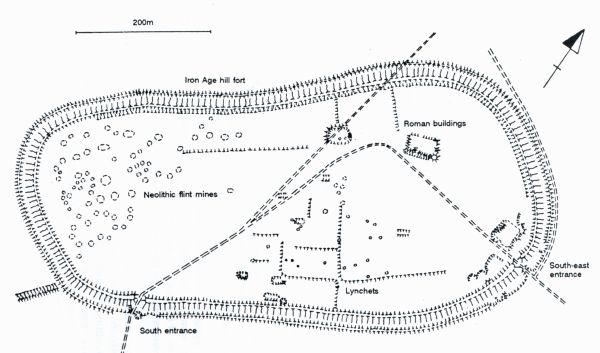
Flint found on the ground has hairline cracks and is often too brittle to be worked, so underground sources were invaluable to Neolithic people. Flint miners dug shafts up to fifty feet deep, with several galleries opening out at the bottom. Each worked-out shaft was filled with rubble dug out from the next one, preserving the old workings from collapse. This was a special gift for archaeologists over five thousand years later. The hollows where the shafts were filled can still be seen on the surface. Archaeologists cleared out the loose chalk and were readily able to enter the mines. An underground world was brought to light which could have been left by the miners only yesterday.
The shafts were dug out with shovels made from the shoulder blades of oxen. Picks were made from deer antlers. The miners used lamps carved from chalk and lit small fires at the bottom of the shafts. These have all been discovered, along with lines scratched on the chalk wall to keep a tally of the flints dug out. One shaft revealed haunting scratched images of a deer and an ox.
It was dangerous work. At least one skeleton found by archaeologists shows how the galleries could collapse, with little hope of escape. On the surface, the flints were worked on site and an enormous quantity of chippings were discarded down the slope nearby.

See a picture and read about flint tools found at Chanctonbury Ring and Cissbury Ring HERE.
